Geologists and scientists can’t agree on how The Pinnacles in Western Australia were formed. But they do agree on one thing: these astonishing stone spires that pierce the golden-red sands in Nambung National Park are mysterious and stunning. Tourists also agree. They flock to see them in droves, making The Pinnacles the most visited attraction in Western Australia outside the city of Perth. I was no exception. Along with the 51 metal sculptures at Lake Ballard, Wave Rock, and the Western Goldfields, it was one of my must-see destinations.
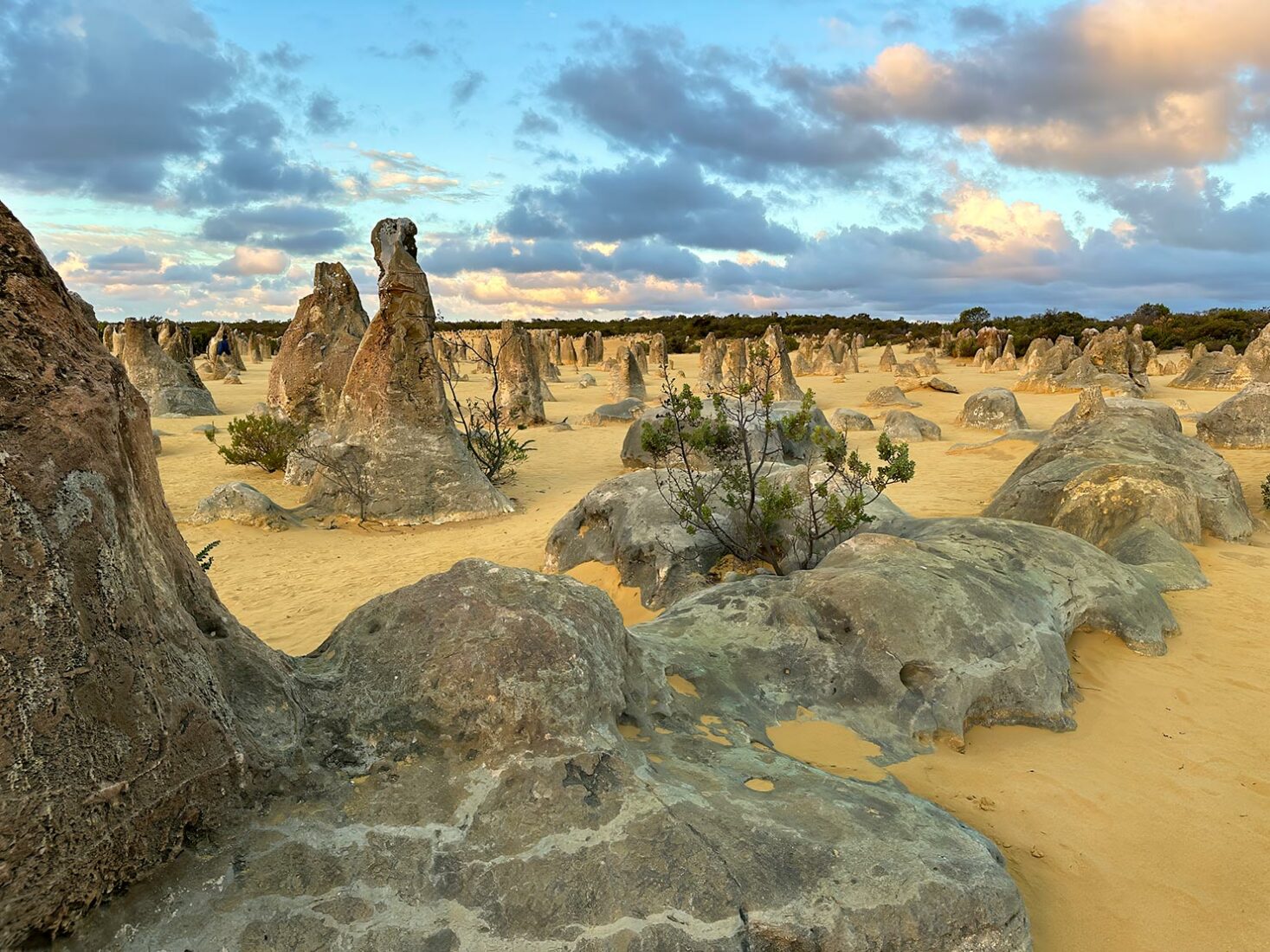
Nambung National Park is located about 2.5 hours north of Perth, just a short distance to the east of Route 60. Better known as Indian Ocean Road, this coastal highway cuts through enormous wind-blown white sand dunes and offers occasional glimpses of the shimmering Indian Ocean. Without a rental car, my next best option for visiting the park was a day tour with Australian Pinnacle Tours. Of the five different options on offer, I chose their Pinnacle Stargazing tour. Following a brief stop at Yanchep National Park to see koalas and kangaroos, we arrived at the Pinnacles in the late afternoon.
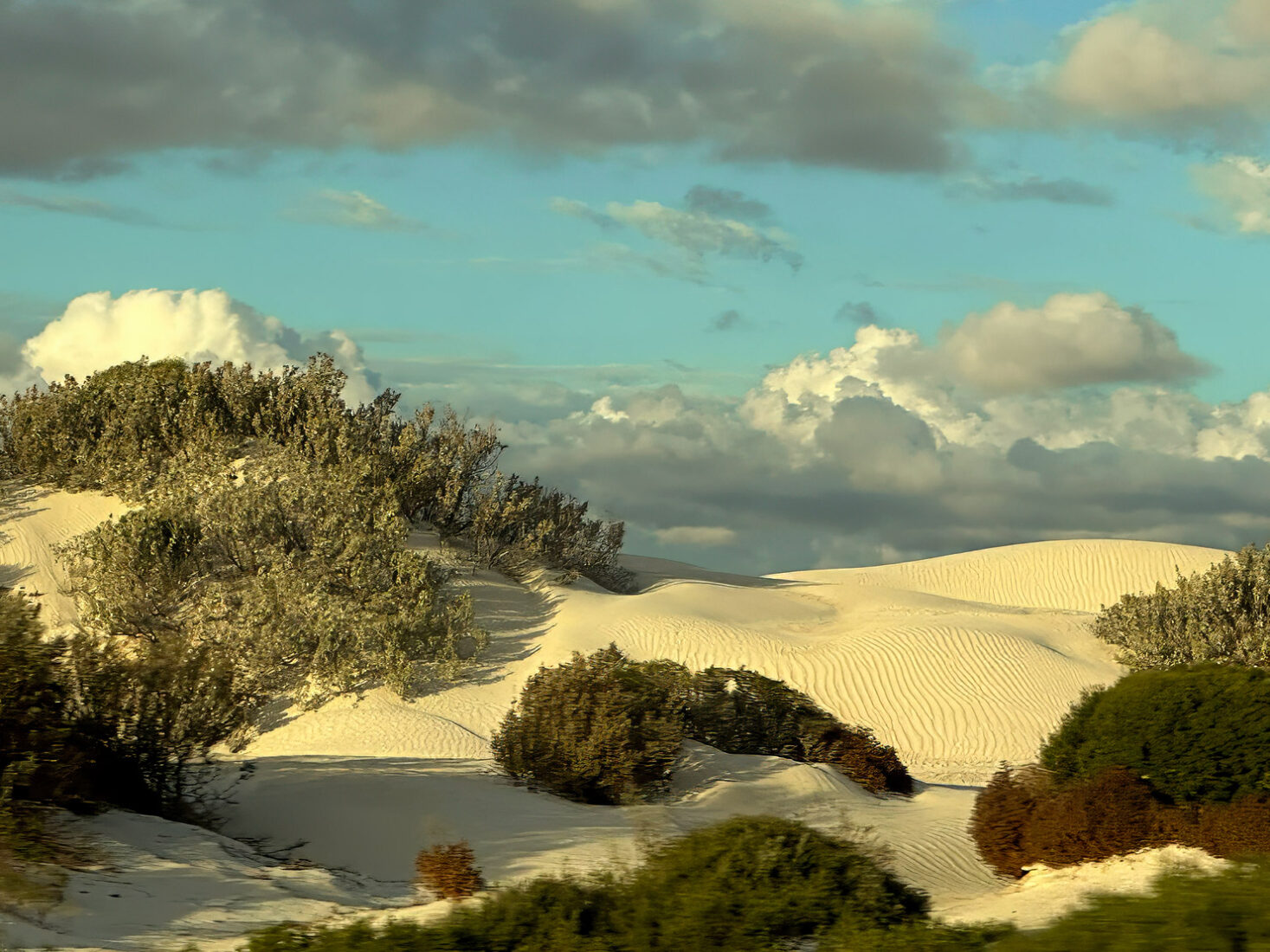
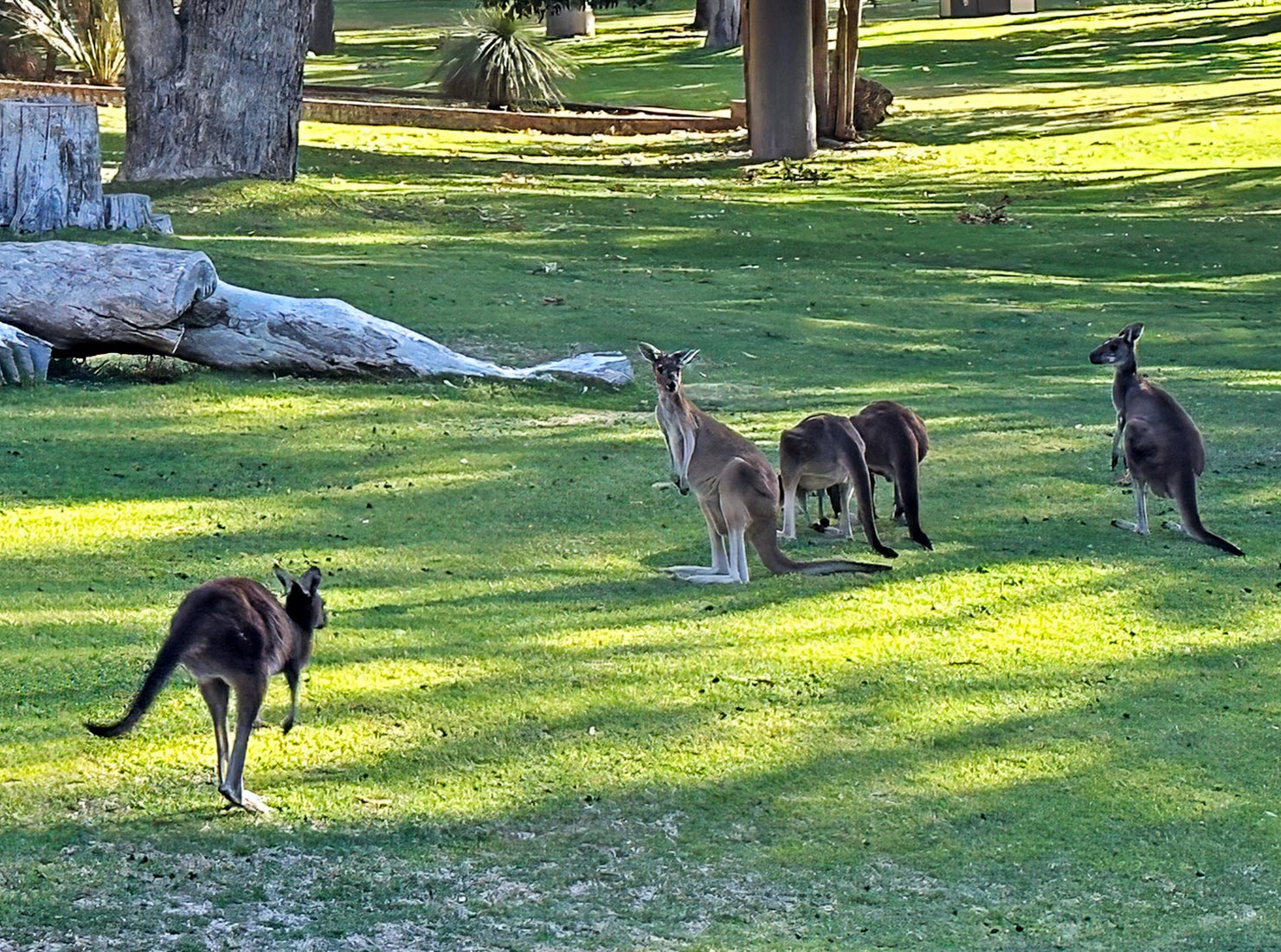
Here our guide left us to explore the rock formations on our own, with a reminder to regroup an hour later on a high sand dune, where we would watch the sun set over the ocean. Transfixed, I wandered through thousands of pinnacles that thrust up from the ochre sand, like a bed of sharp nails awaiting a Hindu Yogi. Some of the more fragile-looking spires are formed from a cemented mixture of calcium, gravel, sand, clay, and silt, but most are Karst limestone, with faces pocked by miniature sinkholes and caves. Moss and lichen have left their marks, as have ancient waters, immortalized as wavy lines at the bases of the formations.

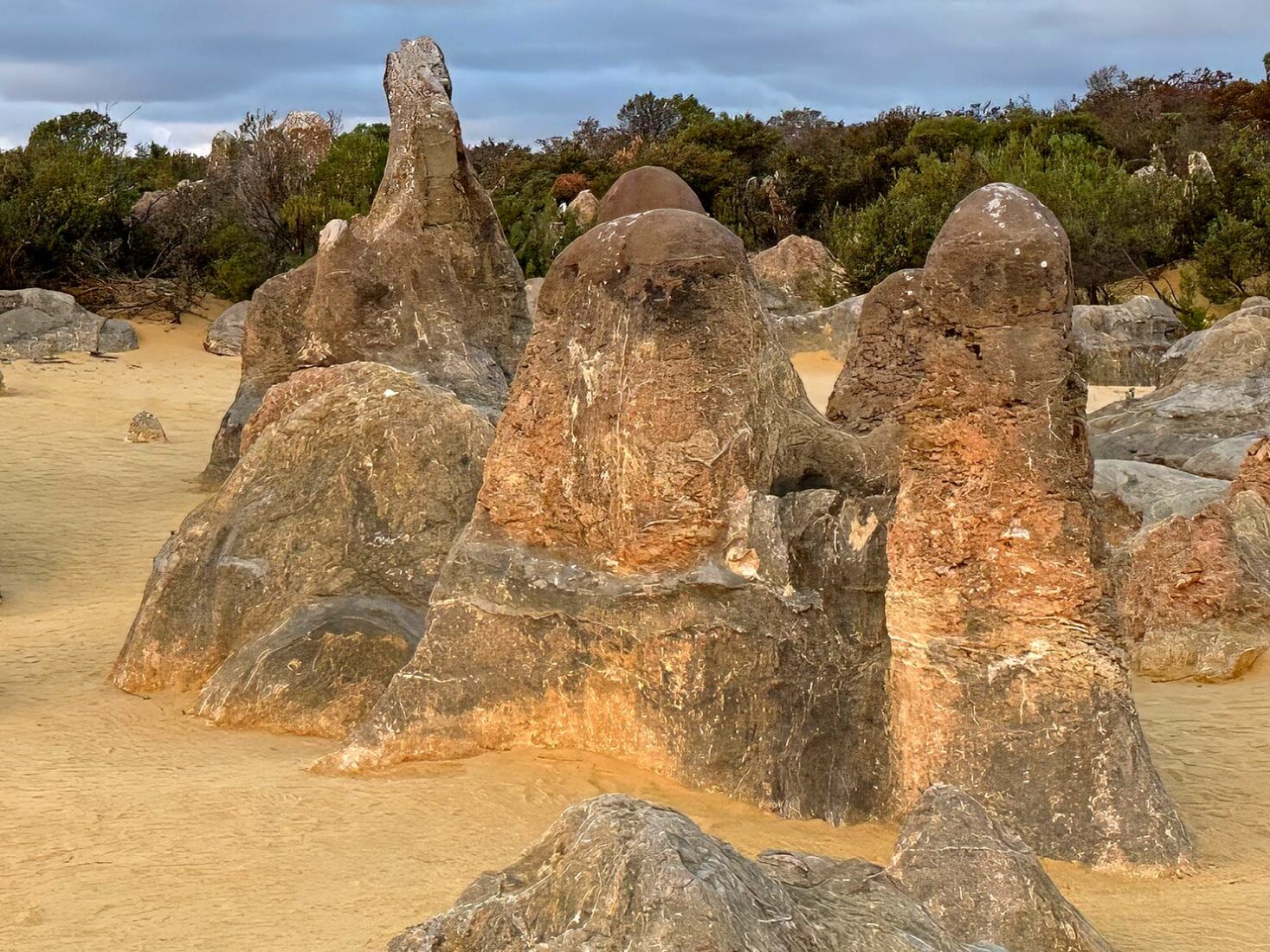
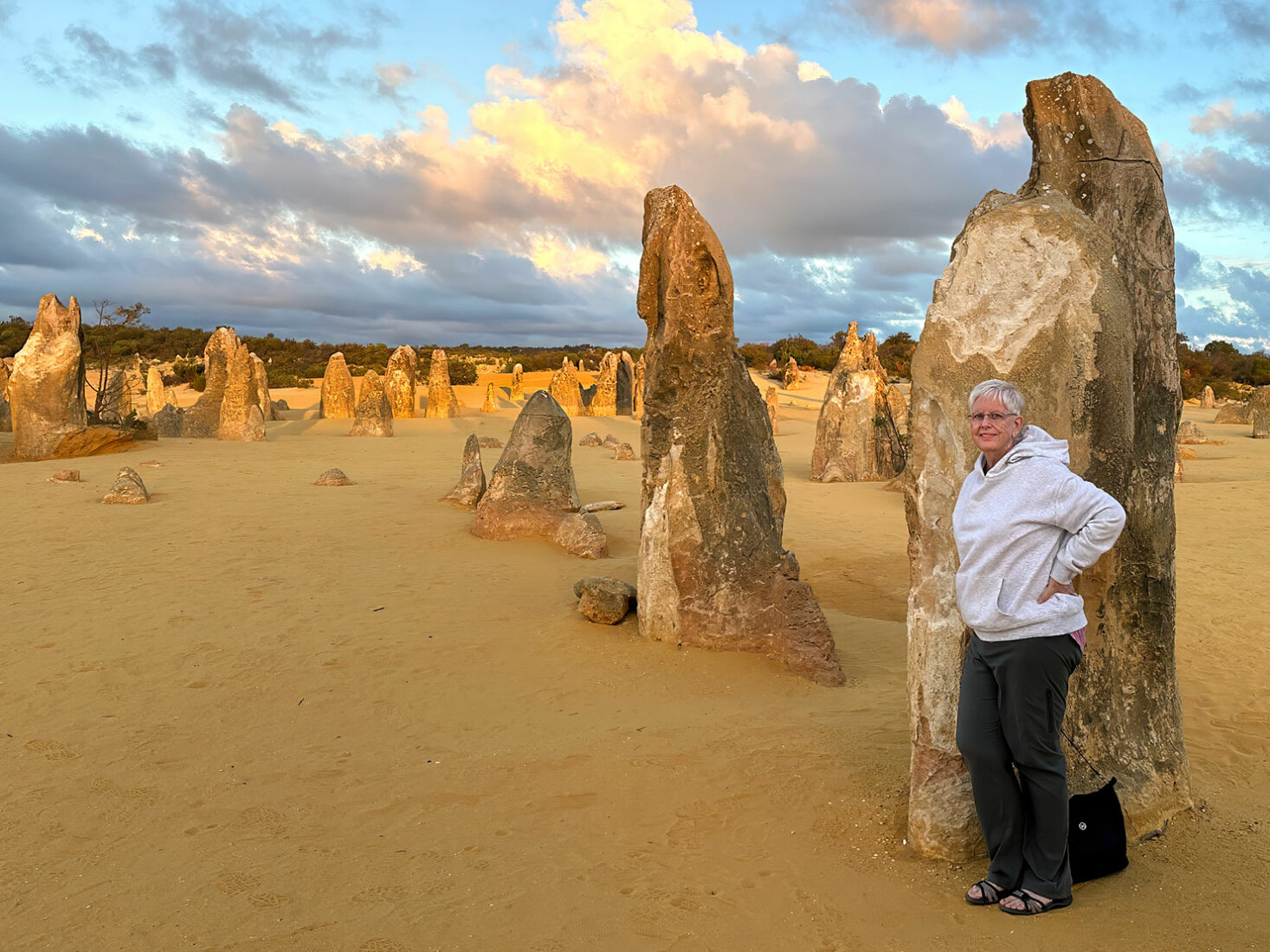
No one knows exactly when The Pinnacles were formed. Although the consensus is that they are between 25,000 and 30,000 years old, some experts opine that they may be as much as a half-million years old. Theories also abound as to how they were formed.
Some believe they are the remnants of an ancient forest, massive tree trunks that have become calcified through deposition of mineral rich water. Others suggest
that plants played an active role, theorizing that transpiration drew dissolved minerals through the soil to the roots, which eventually became calcified.
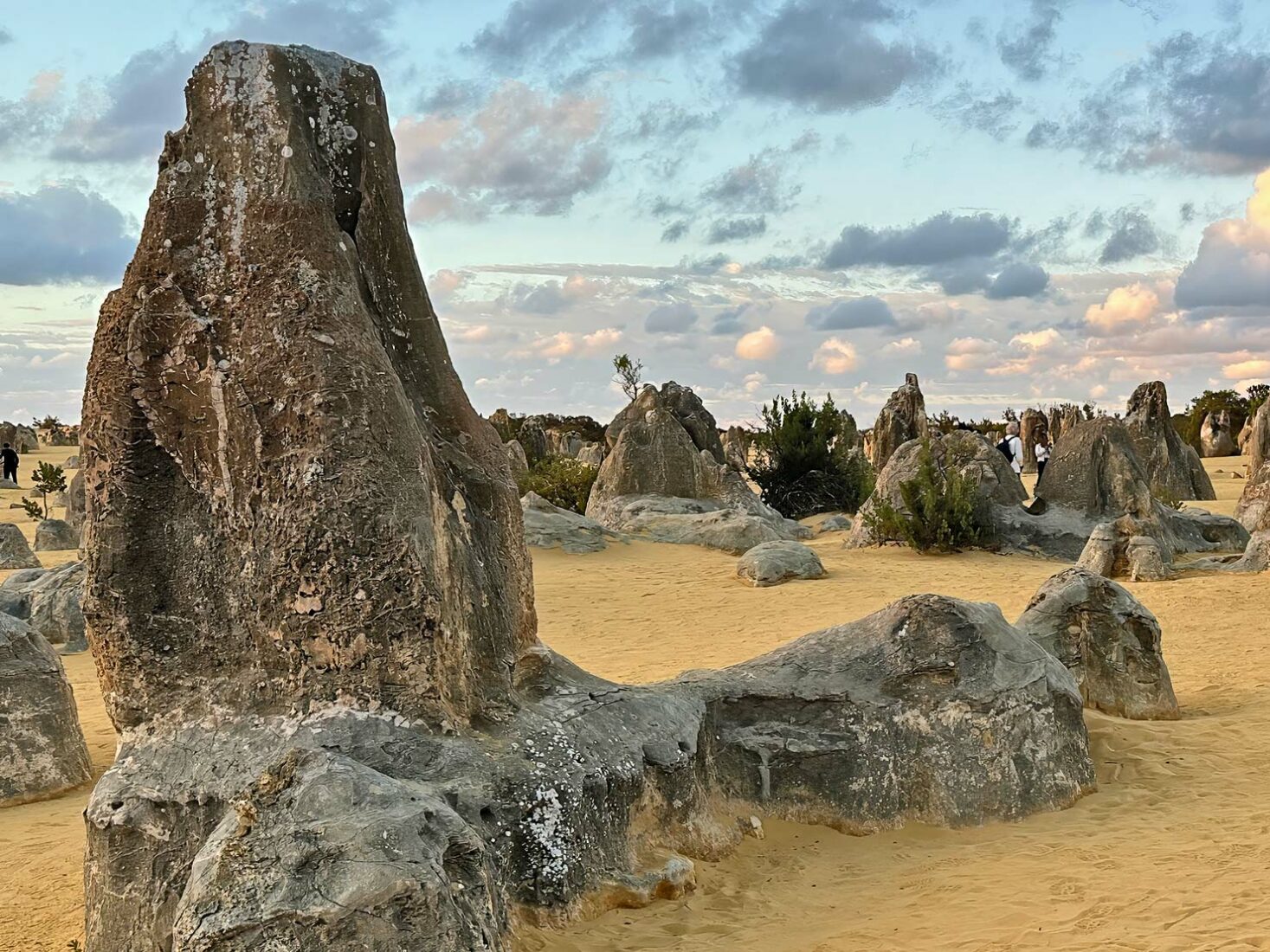
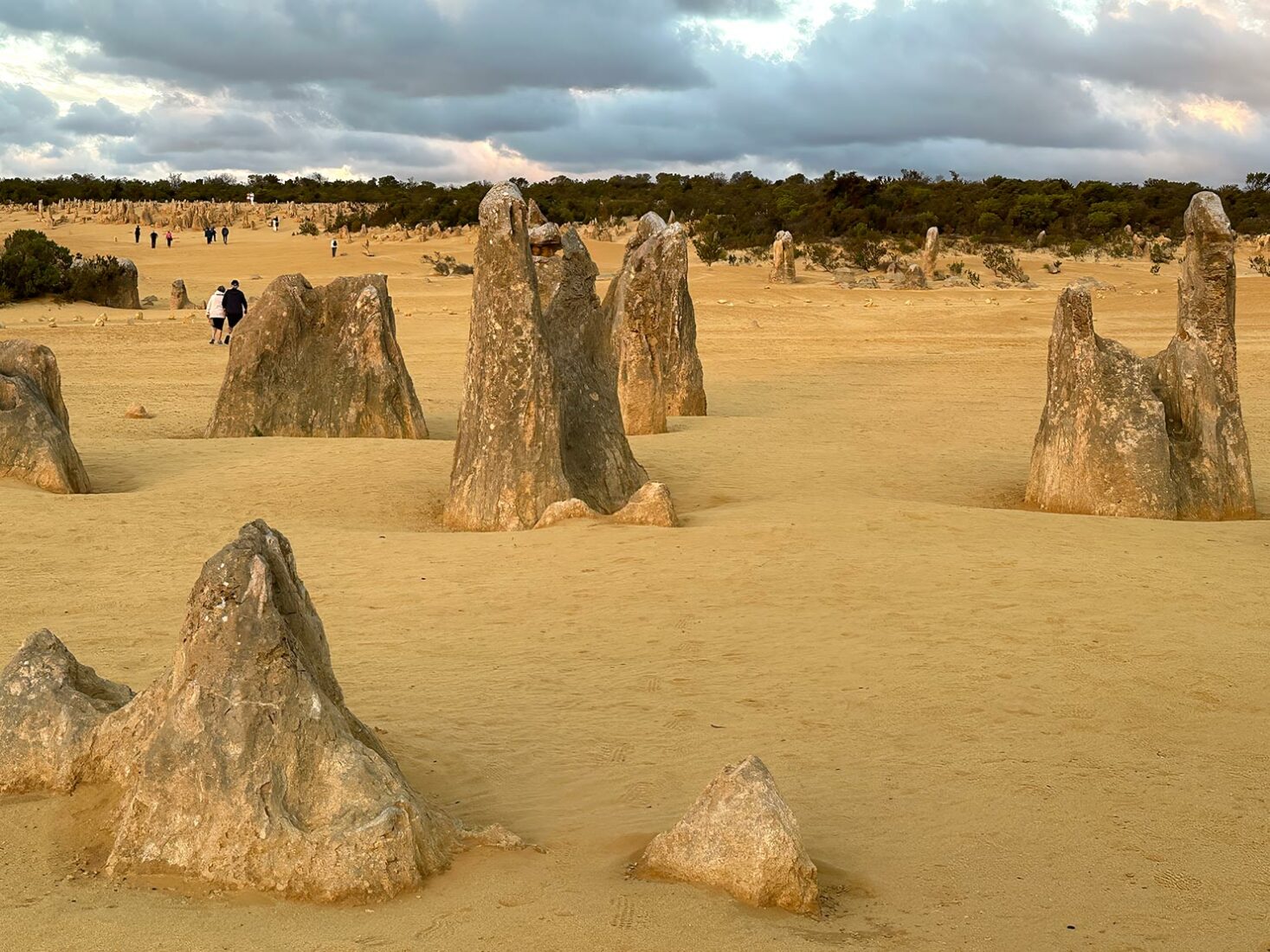
Most, however, believe The Pinnacles were created by seashells that were in abundance 500,000 years ago, when shallow seas covered the area. Shells deposited on the ocean floor were gradually compressed into a dense layer of limestone. When the sea receded about 25,000 years ago, some of the shells were broken down into lime-rich sands that formed wind-blown dunes, while more resistant limestone remained in its monolithic state. Over thousands of years, the action of wind and water eroded the surrounding sands, exposing the hardened limestone and sculpting it into the shapes we see today.

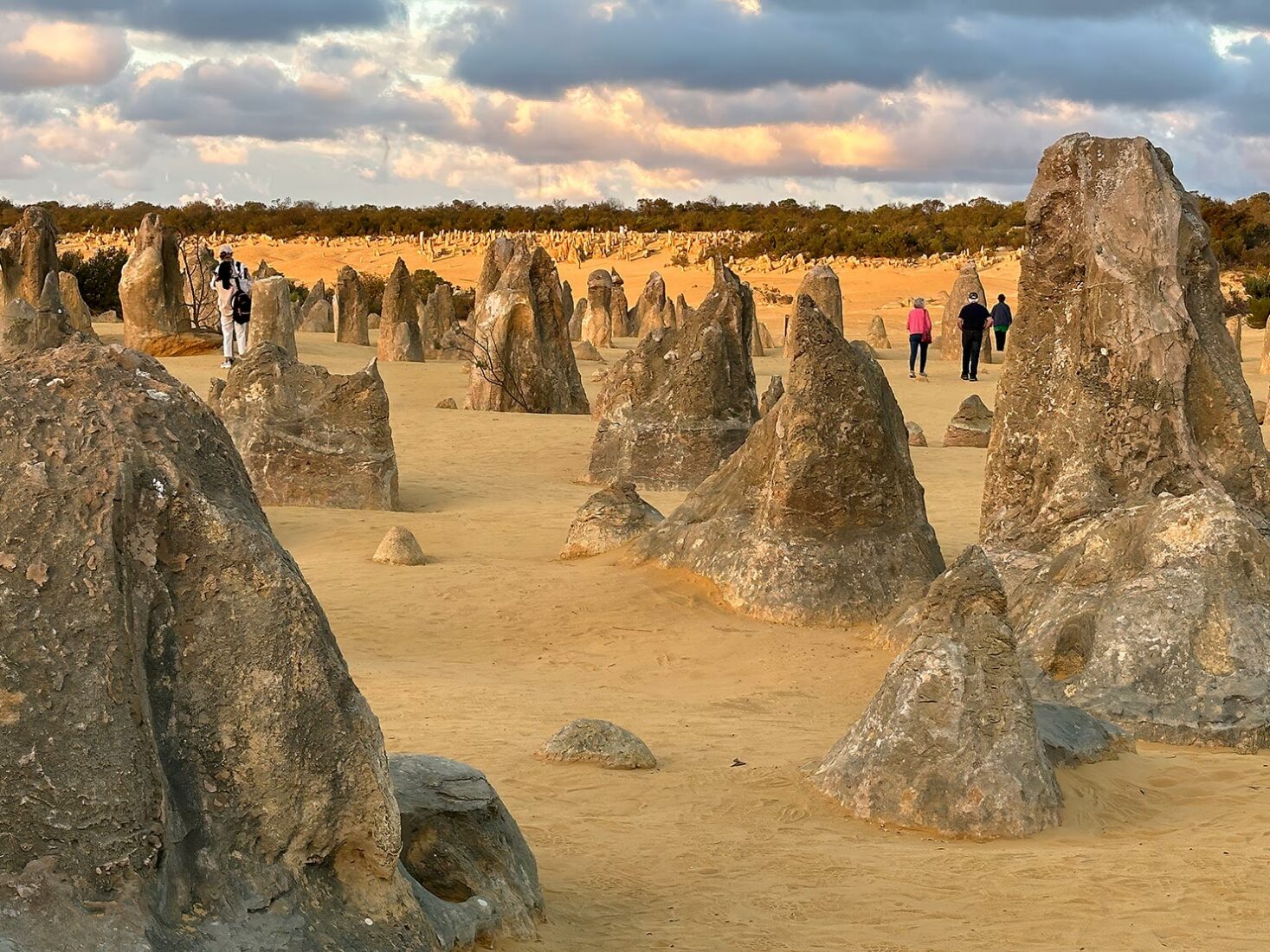
I made my way to the top of the highest dune as the golden hour approached. Not a word was spoken as our group gathered to watch the sun sink into the Indian Ocean. The sand transformed to a sea of bronze. Clouds burst into red and gold flames. In the presence of such beauty, it is easy to believe in a higher source. No man could possibly make this spectacle.

We walked back to the tour bus as darkness descended, headed for the Cervantes Bar and Bistro, where we ate dinner while waiting for complete darkness to descend. Remarkably, for a diner in a town with a population of just 480, dinner was delicious.
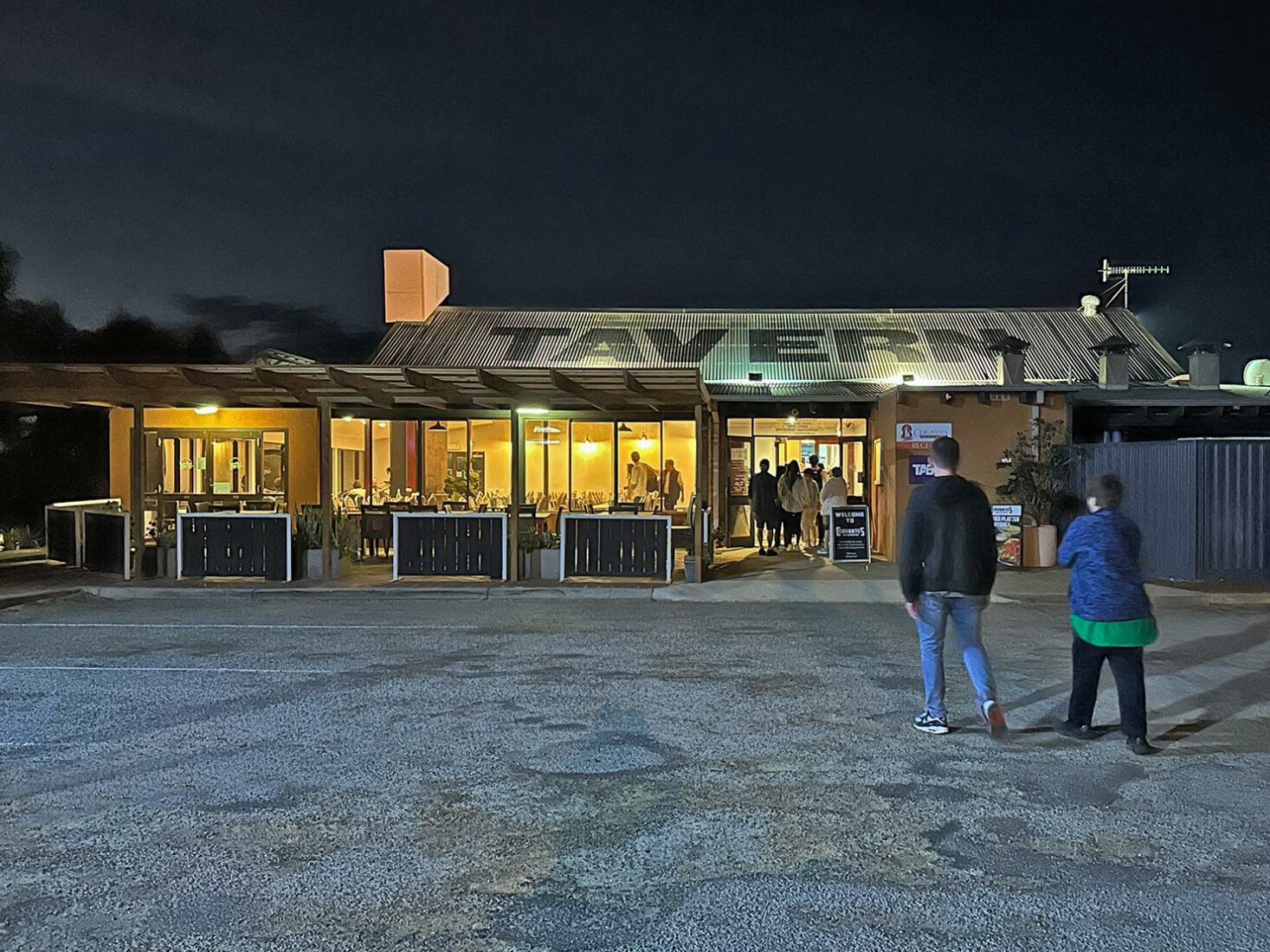
An hour later we were back on the bus for our return trip to Nambung National Park and the stargazing portion of the trip. The tour company’s website features stunning photos of the Milky Way arching across The Pinnacles. As there is zero light pollution at the park, I was beyond excited to try my hand astrophotography, but I was sorely disappointed. We never made it past the parking lot. Our guide used a laser pointer to identify constellations and planets, but there was no opportunity to actually take photography of the stars over the rock formations.
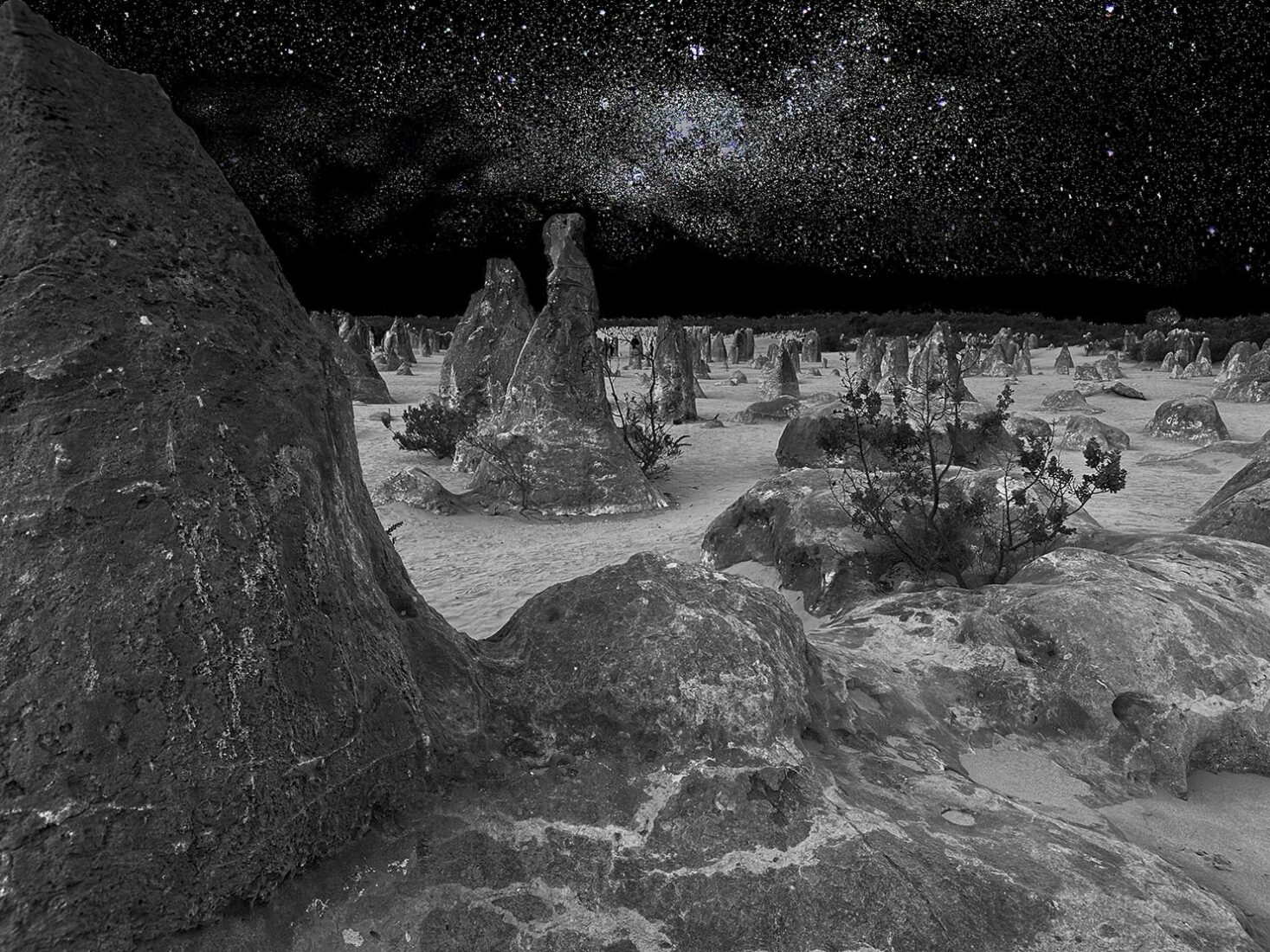
Despite the headlights of passing cars, I managed a couple of shots of the night sky, which I enhanced in Photoshop and then combined with a shot of The Pinnacles. It’s not the real thing, but given the circumstances, it allowed me to imagine what it might have looked like. Though the stargazing portion of the tour was a bust for me, the rest of the tour was excellent. But next time, I’d rent a car and do it on my own.
What is the Aboriginal Connection to The Pinnacles in Western Australia?
The area that is today Nambung National Park is the traditional homeland of the Yued people. Yued groups still gather in the desert to do traditional ceremonies, give birth, and camp beneath the stars. The Pinnacles are sacred to them and should be treated with the utmost respect. Feel free to wander and take photos, but please do not climb on the formations or carry away pieces of them.
What is the Best Way to See The Pinnacles?
For me, walking was the best way to see the park and its geological formations. It takes a minimum of two hours to see the largest area of rock formations, though you may want to stay for the magnificent sunsets, as I did. However, for those who are not able to walk, there is a clearly marked sand road that is easily accessible by two-wheel drive vehicles.

What is the Entrance Fee ?
The fee for a private vehicle carrying up to 12 passengers is $17 AUD (approximately $11.50 USD at the time of this writing).
What Hours is The Pinnacles in Western Australia Open?
Technically, the park is open 24 hours, although some sources say that people are expected to leave by 9 p.m.
What is the Pet Policy for Nambung National Park and The Pinnacles?
Pets are not allowed in the park
Other Things to Do in Nambung National Park and the Surrounding Area
- Visit the Desert Discovery Centre (Visitor Centre) at Nambung National Park, near the entrance to The Pinnacles. It is open seven days a week, from 9:30 a.m. to 4:30 p.m.
- If you are visiting Nambung National Park between August and October, the shifting sand dunes and low heathland burst into flower. Wildflowers stretch from horizon to horizon.
- The town of Cervantes is famous for Its lobster catch, which can be viewed from jetties and from Thirsty Point Lookout, overlooking the Indian Ocean. After witnessing fishermen bringing in the catch, enjoy a fresh grilled lobster at the local Lobster Shack. Fishermen may also want to try their hand catching a fish or two at Thirsty Point Lookout. The town is also home to amazing swimming beaches and snorkeling.
- Just outside of Cervantes, walk the loop trail and boardwalk at Lake Thetis to learn about ancient marine fossils called stromatolites, rock-like structures that date back to the dawn of life on earth.
- At Jurien Bay Marine Park, located just to the north of Cervantes, swim at one of the park’s beaches and snorkel the protected offshore reef system.

What a great article and the photos are stunning! Thank you for sharing.
Thanks so much Mark and Lynda. Glad you enjoyed my story and photos.
lalalalala
great post, been to Australia many time but never made it to western part. now will have to add it to the list for the next trip. thank you.
Great post thank you for sharing
Thank you so much for sharing your incredible experience at The Pinnacles! Your vivid description of the landscape, the theories behind the formations, and the personal reflections during sunset make it feel as though we’re right there with you. I also appreciate the cultural insights about the Yued people and their connection to this sacred land. Your honesty about the stargazing portion of the tour is helpful, and I love how you made the most of the situation with your creative photography. Your journey has certainly sparked a deep appreciation for this awe-inspiring destination. Thank you for taking us on this adventure with you!
The Pinnacles in Western Australia are truly a breathtaking natural wonder. The unique rock formations and their mysterious origins make them an unforgettable sight. The stunning sunsets over the Indian Ocean only add to the magic of the place. It’s also great to know that the area is sacred to the Yued people, reminding visitors to approach with respect. I imagine the wildflower blooms during the spring season would add another layer of beauty to an already spectacular landscape. The surrounding activities, from lobster tastings to snorkeling, make it an even more worthwhile destination!
how could you say such horrible racist things about australia. im dissapointed. #cancelbarbaraweibel
What in God’s green earth are you talking about? Can you even read? Or maybe you don’t understand what you read.
Good response Barbara. I am glad that you are blunt and honest in your replies to such dumb comments.
Which part did you consider racist? I’m truly not sure?
Explore the stunning and mysterious Pinnacles in Western Australia, where ancient limestone formations rise from the desert, creating a surreal and captivating landscape. A must-visit destination for nature lovers and adventure seekers alike.
What a captivating glimpse into the otherworldly beauty of the Pinnacles! Your photos are simply stunning, and your descriptions paint a vivid picture of this unique landscape. I especially loved reading about the Aboriginal Dreamtime stories associated with the Pinnacles – it adds such a layer of depth and mystery to the place. I’ve always wanted to visit Western Australia, and your post has definitely moved the Pinnacles to the top of my bucket list. Thank you for sharing your experience and inspiring others to explore this remarkable natural wonder!
What an amazing place- having not heard of it before but would love to see it. Thank you for bringing to me via your website! Your photos are wonderful!
The Pinnacles are simply stunning aren’t they? I have lived in Perth all my life and can’t count how many times I’ve visited and am in awe every single time. I’ve been there at various times of the day/night, and in every season and can’t pick between sunrise or sunset. The pink skies against the yellow shards of limestone is fabulous.
Dear Barbara,
I am having hard time to find the exact words of admiration for your as always amazing article with such wonderful explantion, photos, on an on I feel like I am almost there.
Thank you for everything you do.
You are a true blessing to this world.
Rene
Your pictures of this amazing park and the pinnacles are absolutely divine. Definite a place worth visiting.
Enjoyed your post! Great photos! I, too, would have been disappointed not being able to try the astrophotography. I’ve never been interested in visiting Australia but your article makes me think I should go.
Love learning about unique places from your travels, Barbara! Another display of stunning photography too!